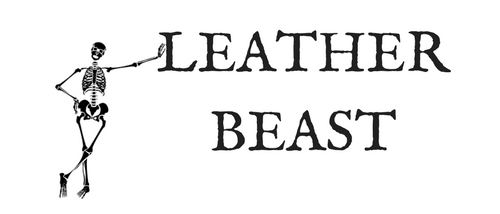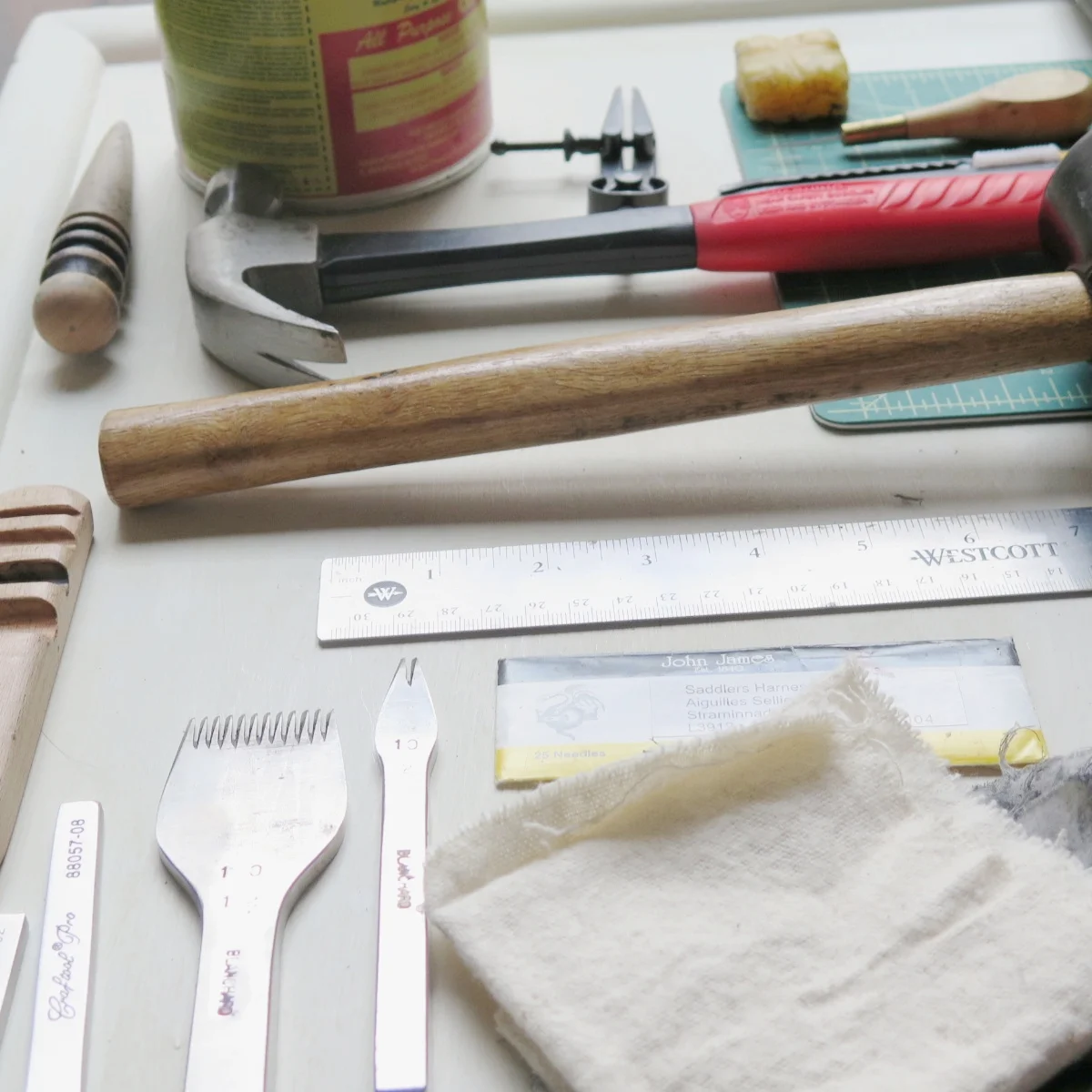This might be the worst blog post title ever. And you might be thinking, "ugh, boooring" but if you want to be informed and confident when picking out and purchasing leather hides then these are a few terms that you're going to want to be familiar with.
Read MoreHave you ever been shopping for leather and come across the myriad of terms used to describe the type of tannage, or leather grade, finish, etc that is involved in processing it? This was one of the most confusing things (and still can be confusing!) when I first started to work with leather.
Leather manufacture from it's earliest processes involving urine, feces and brains (still used today in smaller operations!) to the now majorly chemical and scientific processes is, well, complex.
Read MoreSaddle-stitching can be tricky business if you’re not quite sure which tools you should be using, how exactly to saddle-stitch in the first place or what the common beginner leatherworking pitfalls are!
But it doesn’t have to be a tricky process. Below i've listed 4 of the most common beginner mistakes (believe me, been there done that, don't want to go back!) to avoid when saddle-stitching.
Read MoreI get this question a lot…
How do I know how much thread I need for my project or my area of stitching?
There are 3 main factors that will affect your determination of how much thread you will need for your project.
Read MoreWhen I first started learning traditional leatherwork I knew absolutely nothing but was eager to learn! I was taught by a French master leatherworker who only used the best French tools. Go figure!
She taught me the basics of traditional leatherwork which included how to use a tool called a pricking iron. But as I started experimenting with the other tools options months and years later I came across a tool called a stitching chisel and also a lot of viewpoints on which of these two tools is the best choice.
Read MoreHave you ever felt like your clients, customers, friends or strangers at a trade show (who pickup your products and put them back down unceremoniously), have no idea the time, effort and care that goes into producing a traditional leathergood?
Below i’ve listed 6 reasons, starting with the more indisputable reasons why we choose to hand saddle-stitch over machine stitch and then round it out with more personal reasons as to why I hand saddle-stitch all of my leathergoods. These are purely personal reasons, but who knows, maybe we share some of the same reasoning.
Read MoreIt takes so much time and effort to complete a good looking wallet, belt, handbag or any other leather good that is sewn completely by hand, so it makes sense to spend some time on some preparation work. I have broken out the preparation work into the 4 simple steps I take each time before sitting down to saddle-stitch. Doing so will absolutely take your leatherwork to the next level.
Read MoreWhether you choose to use a stitching clam or a stitching pony, rest assured both tools are going to get you to the finish line. Their purpose is pretty simple: to hold your work in place so that you can use both hands when saddle-stitching. There are however a few differences between the tools that might sway you in one direction or the other if you're thinking about purchasing one of these guys.
Read MoreI've been seeing this question a lot recently on Youtube and other forums, so I wanted to share a video that I made that explains exactly how I thread and knot my thread onto my needles prior to stitching.
Read MoreI recently I had the pleasure of catching up with Nicolas Hollows of Hollows Leather, about his process and philosophy behind his leatherwork. If you aren't familiar with Nicolas' work, you're missing out and should stop what you're doing right now and go check it out. His work is clean, stitching is beautiful and styling rings true to his personal brand. Read the Q&A below to find out how Nicolas went from finding a box of leather tools to becoming a successful leatherworker. And at the end he also give his insiders tip on design inspiration where he manages to reference permaculture, airplanes and Bob Ross in the same sentence.
Read MoreWhile quality tools certainly will help you get there, in the beginning all you need for success is a basic set of tools, knowledge, patience and a lot of practice. Hopefully, I can help you with the first two and you can handle the last two.
If you're just getting started or are trying to figure out how to get started and within a budget, keep reading.
Read MoreI hear hear a lot of questions about leather edge finishing these days like, "what IS the best method for finishing?" I also hear a lot of people asking, "why should I finish my leather edges at all?"
Both are great questions!
Completing a leather project without finishing the edge is like leaving the house without putting deodorant on.
It's just wrong.
Finishing your edges is what seals the deal on your project. What takes it to the next level. What makes it look better and also what makes it look like it was made by a pro.
Incase you're not sure, let's talk about what I mean by "edge finishing".
Edge finishing is the process of creating a smooth edge along your exposed seams by completing a few fairly simple steps, consisting mainly of truing up edges, using various methods of burnishing, then applying wax and buffing.
There is no magic here. It can be tedious but it really does elevate your work.
But the best part is, is that it's easy and not complicated.
Read MoreI am always seeking that perfectly crafted slanted saddlestitch. The stitch that screams skill, precision and attention! Maybe we're all searching for the same thing?
I've explored many reasons for why my stitching, though it's not bad, was certainly far from perfect and i've found a few contributing factors relating to thread.
Thread type, size and material is all very important when saddle-stitching.
There are of course, so many other factors that you have to get just right too, but today I want to focus on threads, because it can make a huge difference in the quality of your work.





![Why I (and maybe you too) continue to Saddle-stitch [6 reasons]](https://images.squarespace-cdn.com/content/v1/58895ea0e4fcb519d7d62a81/1504209007991-GIMC9NCEN784G83PTPEJ/WHY+I+%28AND+MAYBE+YOU+TOO%29+CONTINUE+TO+SADDLE-STITCH+%286+REASONS%29+%281%29.png)

![Why Knot Your Thread [VIDEO Inside]](https://images.squarespace-cdn.com/content/v1/58895ea0e4fcb519d7d62a81/1499784909141-RGT35990SRQHW0EZYLXP/IMG_0173.PNG)





